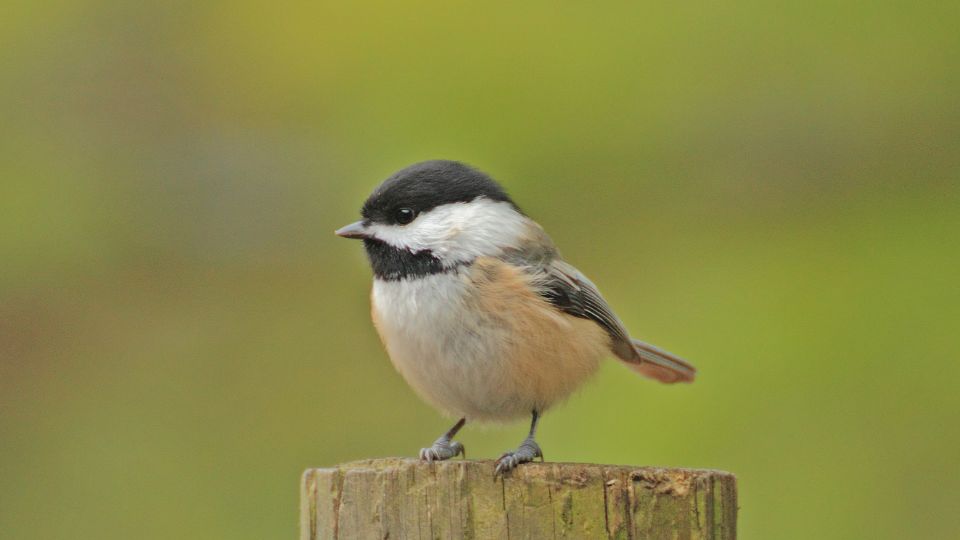Chickadees are cute and curious birds found in all parts of North America. Their friendly and inquisitive nature makes them a little more brave and friendly than other wild songbirds, and with enough patience and practice, chickadees will even eat seeds right out of your hand!
Chickadees are found all throughout the United States, from places like Arizona, The Great Lakes Region, and down south to the Carolinas. Despite being of the same genus, the coloring and nature of this cute and friendly bird change ever so slightly in different regions.
Below, let’s dive into the different species of Chickadees and the unique features that make them such beloved backyard songbirds.
What Does a Chickadee Look Like?
Chickadees are notoriously cute. They’re small and stout with a little black cap and bib with downy white cheeks. While the coloring of different chickadee species changes from region to region, most still retain their black cap and white cheeks, making them easy to spot at backyard feeders.
Types of Chickadees
All species of chickadees belong to the poecile genus. The Poecile genus contains a total of 15 species, which can be found across several different continents including Europe and Asia. The North American genus are referred to as chickadees, while the other half of the genus are referred to as Tits.
The name Poecile (genus taxonomic categorization) is derived from the ancient greek work “colorful,” which can be seen across the entire array of chickadees and tits in the genus. The most common chickadee in North America is the Black-capped chickadee.
Female Chickadee
Mate and female Chickadees look almost identical. Some studies claim that the black bib on the male chickadee is slightly larger than the females – but this has yet to be proven. Males are also somewhat smaller than females, but the subtle differences are hard to spot at a glance. The best way to spot a female Chickadee is to observe her behavior.
During the breeding season, the song of the female chickadee changes slightly and sounds raspier with her “dee-dee-dee” melody. Male Chickadees are the only ones that can inflate their yellow vocal sacs.
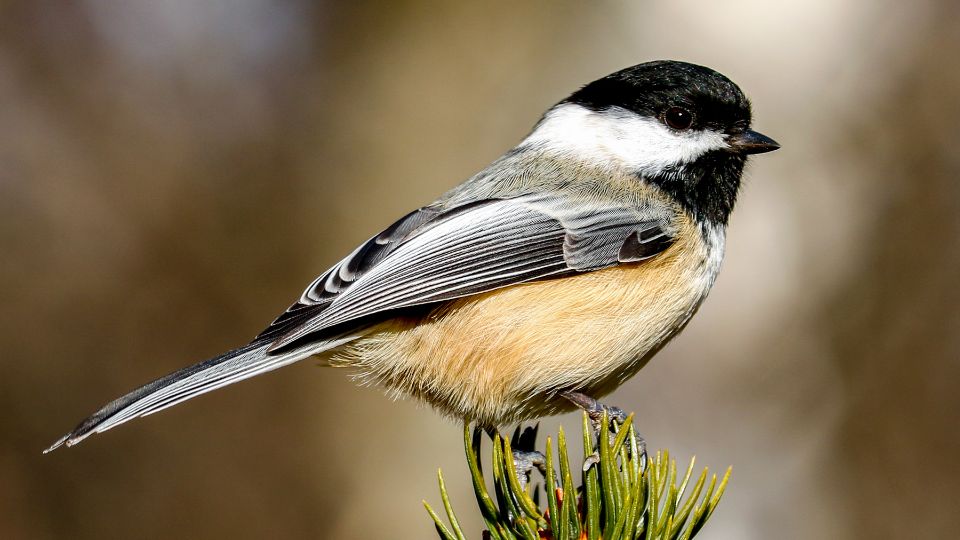
Black-Capped Chickadee
The Black-Capped Chickadee dwells year-round in the cooler climates of Canada and the northern parts of North America. Since they aren’t migratory birds, they can be found munching at backyard birdfeeders even in pretty cold temperatures.
These songbirds are easy to spot with their patented black cap, downy white breast and cheeks, and dee-dee-dee song.
If you can’t quite recognize the bird at your feeders, the Black-Capped Chickadee song tells you who they are. Their dee-dee-dee song serves as a mating call, but if you hear more dee’s, they are alarmed or warned of nearby hawks.
The Carolina chickadee appears to be almost identical to the Black-capped chickadee. The most significant difference between these two birds is where they live. Black-Capped Chickadees live in colder climates, while the Carolina Chickadee resides in the United States’ southern portion.
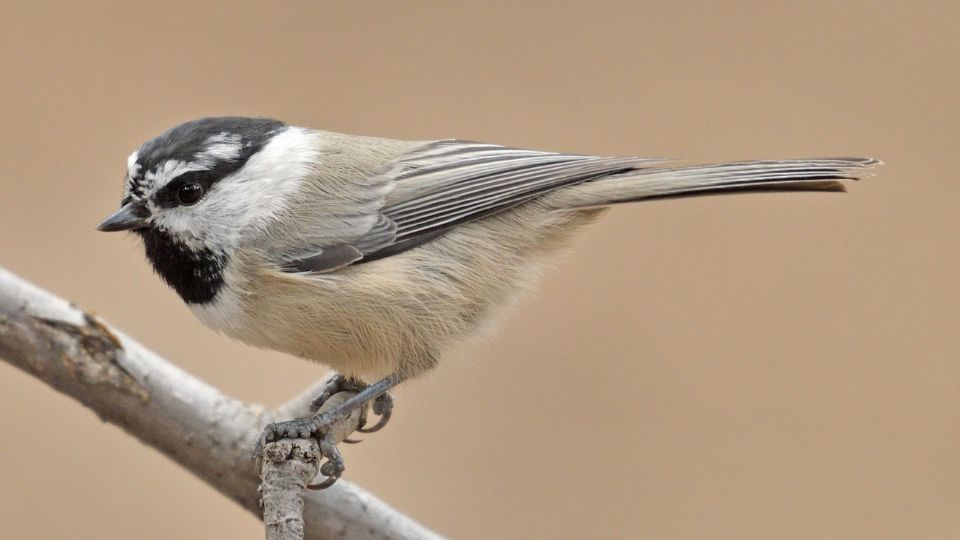
Mountain Chickadee
As the name suggests, mountain chickadees live in coniferous forests in New Mexico, Arizona, and the Rocky Mountain region. This chickadee species looks very similar to its other Chickadee cousins, with a few key differences.
Overall, the coloring of the Mountain Chickadee is more muted. Instead of the stark contrast of black with white underparts, the mountain chickadee has more gray coloring. One of the most notable features on a Moutain chickadee is the white lines on its black cap.
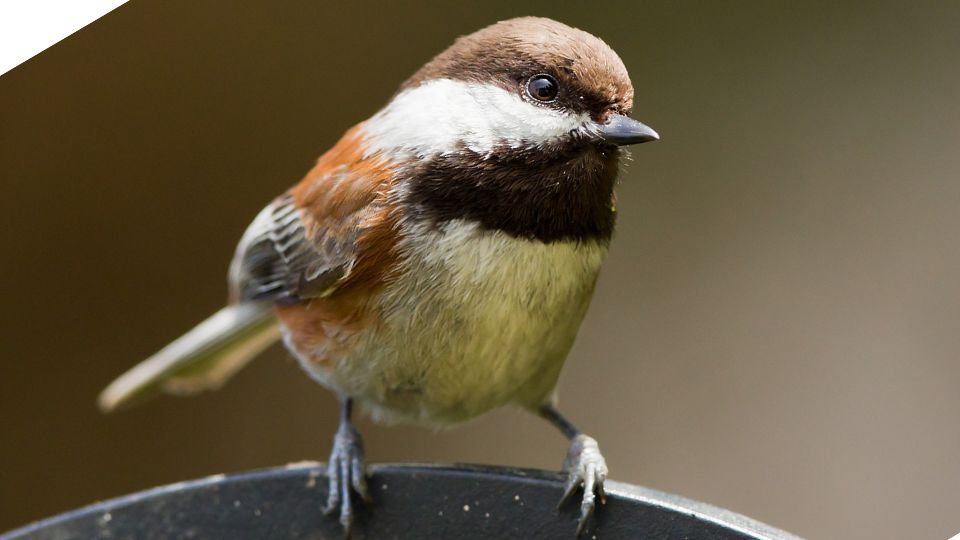
Chestnut-Backed Chickadee
If you’re not careful, it’s easy to mistake the Chestnut-backed chickadee for a House Sparrow! It has very similar shades of chestnut and white feathers, but it still maintains the hallmarks of a Chickadee. While the coloring is more brown than gray and black, it retains the same unmistakable black cap and bib.
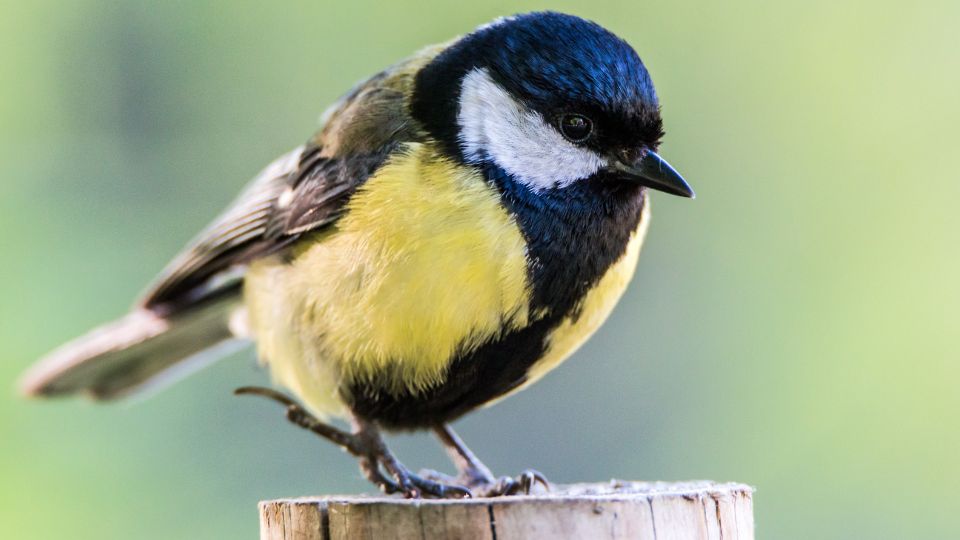
Yellow Chickadee
The Yellow Chickadee is the flashy cousin in the chickadee family but often gets confused for a Goldfinch. It has very similar feather patterns to a Black-Capped Chickadee, but instead of downy white feathers, it has accents of bright yellow (like it’s wearing a yellow vest!)
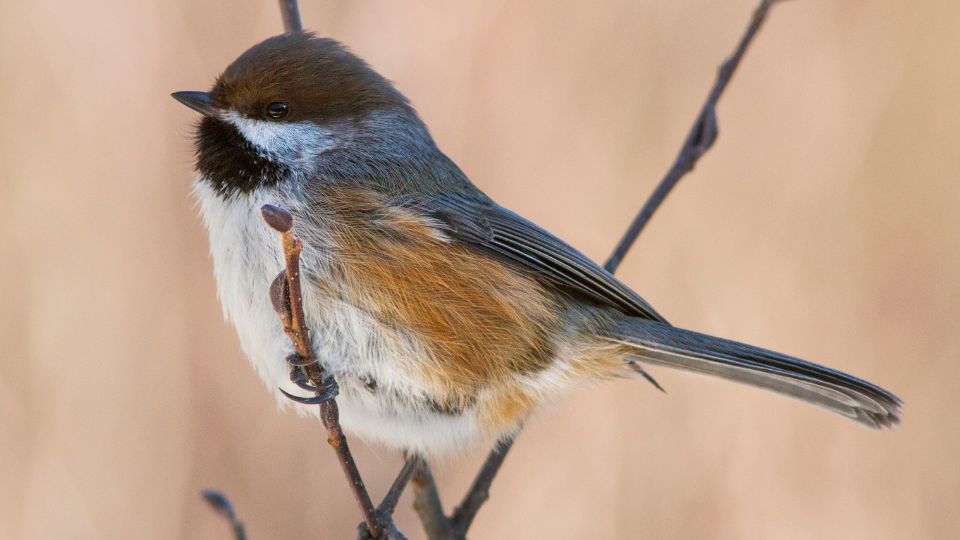
Boreal Chickadee
This dust-covered chickadee lives primarily in colder climates in Canada but also makes it home in the northern portion of the United States. While they have similar features to the Black-Capped Chickadee, their feathers take on a dusty tone with rust-colored feathers. Instead of sharp white edges, the coloring of the Boreal Chickadee is muted.
It’s also important to note that the call of the Boreal Chickadee is slower and tinnier than the Black-Capped Chickadee.





Chickadee Pictures
As you can see, various species of chickadee may look a little different, but that all have that similar vibe. Even with varying feathers of color, they all retain traces of a black cap and bib. When in doubt, the chickadee will always tell you who they are when they open their beak and sing a variation of the “dee-dee-dee” song!
What Do Chickadees Eat?
The diet of the chickadee depends on the time of year. In the summer, these birds dine primarily on insects such as caterpillars, cricket, spiders, and mealworms. Later in the season, they eat berries and fruit, and in the winter, they dine primarily on seeds.
What’s so interesting about the chickadee is how they cache food. If you observe them at your backyard feeders, you may notice that they take a seed and then fly away. Where are they going? Chickadees cache food like seeds and even bugs in the bark of a tree, similar to Jays.
If you want to lure chickadee songbirds to your backyard, opt for feed such as sunflower seeds and suet. These food sources help keep energy levels high, especially in the winter.
Birds Similar to Chickadees
Even for bird-watching novices, the chickadee is one of the easiest birds to spot, even among the 15 species of chickadee. While other species vary in color, they all have similar hallmarks of black caps and dee-dee-dee songs.
Things get a little more confusing when you introduce similar species that reside in overlapping habitats. Little birds such as the junco (the most common bird in North America), the tufted titmouse, warblers, sparrows, nuthatches, and even some woodpeckers are easy to mistake for the Black-capped chickadee. These similar backyard birds have much in common regarding color, size, and even behaviors!

